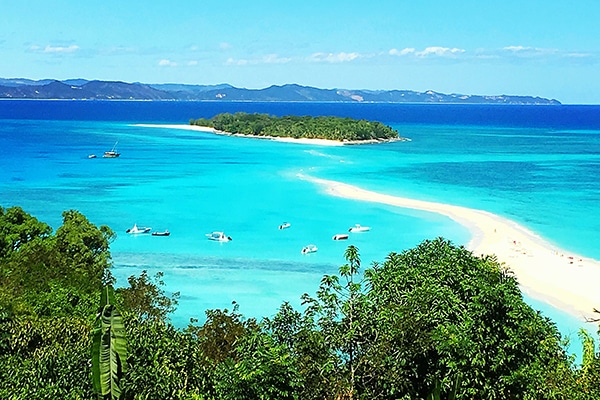Tourism in Madagascar is a journey to the heart of diversity, with gems such as Nosy Be. Located in the Mozambique Channel, Nosy Be, which means “big island” in Malagasy, offers a unique coastal experience.
Nosy Be, with an area of 321 km2, is the largest island in an archipelago comprising Nosy Komba, Nosy Fanihy, Nosy Sakatia, Nosy Iranja, Nosy Tanikely, the Mitsio and Radama archipelagos. This region belongs to the department of the Diana region. With its eventful terrain and its beaches lined with coconut trees, Nosy Be seduces travelers.
The pleasant climate of Nosy Be, with an annual average of 25°C, is influenced by the Tsaratanana range to the east. Fascene International Airport facilitates access to the island. On site, taxis, tuk-tuks, and bicycles allow you to get around.
Nosy Be offers rich marine biodiversity with tropical fish and coral reefs, notably in Nosy Tanikely. The terrestrial fauna includes lemurs, while the flora offers species such as rosewood and ylang-ylang.
The history of Nosy Be dates back to the 9th century with Arab navigators. Colonized by the French in the 19th century, the island was an economic center with the cultivation of sugar cane and coffee.
Today, tourism plays a major role in the economy of Nosy Be. Ambatoloaka, a fishing village that has become a tourist site, is the starting point for island activities. However, the island faces challenges, including sex tourism.
Despite these challenges, Nosy Be remains a popular destination. Outside of tourist areas, authentic places like the southeast coast and the Lokobe Nature Reserve offer a preserved experience.
The local culture is discovered through cuisine based on fish and seafood. Nosy Be is also known for its festivals, such as Donia and Nosy Be Symphonies.
The island, once focused on agriculture, has turned to tourism since the 1960s. Although challenges persist, Nosy Be remains a pearl of the Indian Ocean, inviting travelers to explore its natural and cultural wealth .






Comment (0)